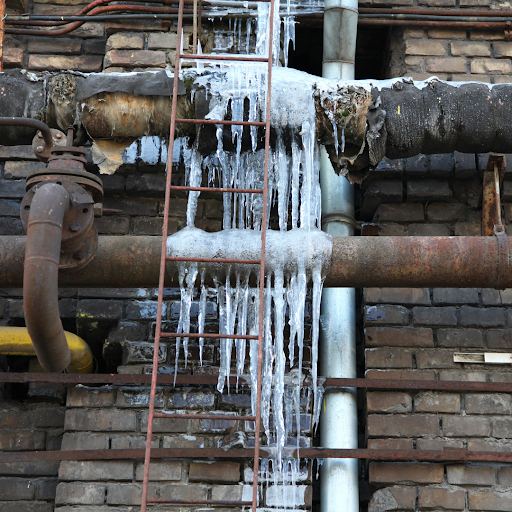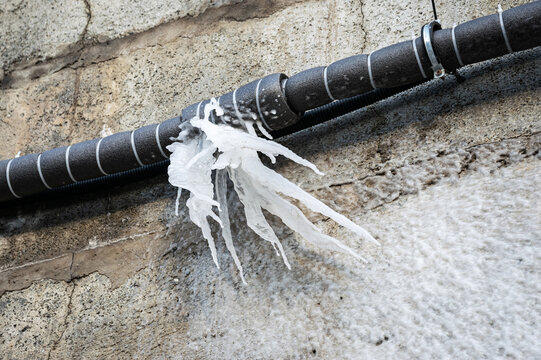Important Tips for Avoiding Frozen Pipes in Winter Seasons
Important Tips for Avoiding Frozen Pipes in Winter Seasons
Blog Article
The article following next involving Helpful Tips to Prevent Frozen Pipes this Winter is incredibly informative. Don't bypass it.

Cold weather can ruin your pipes, especially by freezing pipelines. Here's how to stop it from happening and what to do if it does.
Intro
As temperatures drop, the danger of frozen pipelines increases, potentially leading to expensive fixings and water damages. Understanding exactly how to stop icy pipes is critical for home owners in chilly climates.
Understanding Frozen Pipelines
What creates pipelines to ice up?
Pipes ice up when subjected to temperatures listed below 32 ° F (0 ° C) for expanded periods. As water inside the pipes ices up, it broadens, putting pressure on the pipeline wall surfaces and potentially creating them to break.
Threats and problems
Icy pipelines can lead to supply of water disturbances, building damages, and costly repair work. Ruptured pipelines can flood homes and trigger substantial structural damages.
Indications of Frozen Pipes
Recognizing frozen pipelines early can prevent them from breaking.
Exactly how to recognize frozen pipelines
Seek lowered water circulation from taps, uncommon odors or sounds from pipelines, and visible frost on subjected pipelines.
Avoidance Tips
Protecting susceptible pipelines
Wrap pipelines in insulation sleeves or utilize heat tape to secure them from freezing temperature levels. Focus on pipes in unheated or outside areas of the home.
Heating strategies
Maintain indoor rooms effectively heated, particularly locations with pipes. Open cabinet doors to permit cozy air to distribute around pipes under sinks.
Protecting Exterior Plumbing
Yard hoses and outdoor taps
Detach and drain yard tubes before winter months. Mount frost-proof spigots or cover exterior taps with protected caps.
What to Do If Your Pipes Freeze
Immediate actions to take
If you think frozen pipes, keep faucets open to ease pressure as the ice melts. Utilize a hairdryer or towels soaked in hot water to thaw pipelines slowly.
Long-Term Solutions
Architectural changes
Think about rerouting pipes away from exterior wall surfaces or unheated areas. Add additional insulation to attic rooms, basements, and crawl spaces.
Updating insulation
Invest in high-grade insulation for pipelines, attics, and walls. Appropriate insulation assists maintain consistent temperatures and lowers the threat of frozen pipes.
Final thought
Protecting against frozen pipelines needs aggressive procedures and quick actions. By comprehending the reasons, indications, and preventive measures, home owners can secure their pipes during winter.
5 Ways to Prevent Frozen Pipes
Drain Outdoor Faucets and Disconnect Hoses
First, close the shut-off valve that controls the flow of water in the pipe to your outdoor faucet. Then, head outside to disconnect and drain your hose and open the outdoor faucet to allow the water to completely drain out of the line. Turn off the faucet when done. Finally, head back to the shut-off valve and drain the remaining water inside the pipe into a bucket or container. Additionally, if you have a home irrigation system, you should consider hiring an expert to clear the system of water each year.
Insulate Pipes
One of the best and most cost-effective methods for preventing frozen water pipes is to wrap your pipes with insulation. This is especially important for areas in your home that aren’t exposed to heat, such as an attic. We suggest using foam sleeves, which can typically be found at your local hardware store.
Keep Heat Running at 65
Your pipes are located inside your walls, and the temperature there is much colder than the rest of the house. To prevent your pipes from freezing, The Insurance Information Institute suggests that you keep your home heated to at least 65 degrees, even when traveling. You may want to invest in smart devices that can keep an eye on the temperature in your home while you’re away.
Leave Water Dripping
Moving water — even a small trickle — can prevent ice from forming inside your pipes. When freezing temps are imminent, start a drip of water from all faucets that serve exposed pipes. Leaving a few faucets running will also help relieve pressure inside the pipes and help prevent a rupture if the water inside freezes.
Open Cupboard Doors
Warm your kitchen and bathroom pipes by opening cupboards and vanities. You should also leave your interior doors ajar to help warm air circulate evenly throughout your home.

I ran across that article about Preventing and dealing with frozen pipes when doing a search on the web. So long as you enjoyed our blog post kindly consider to pass it around. Thanks a bunch for your time. Revisit us soon.
Schedule And Pricing Report this page